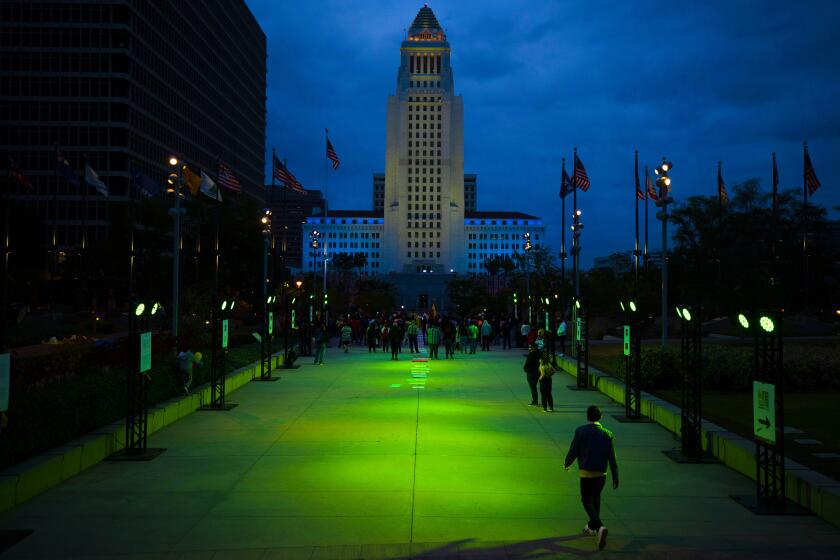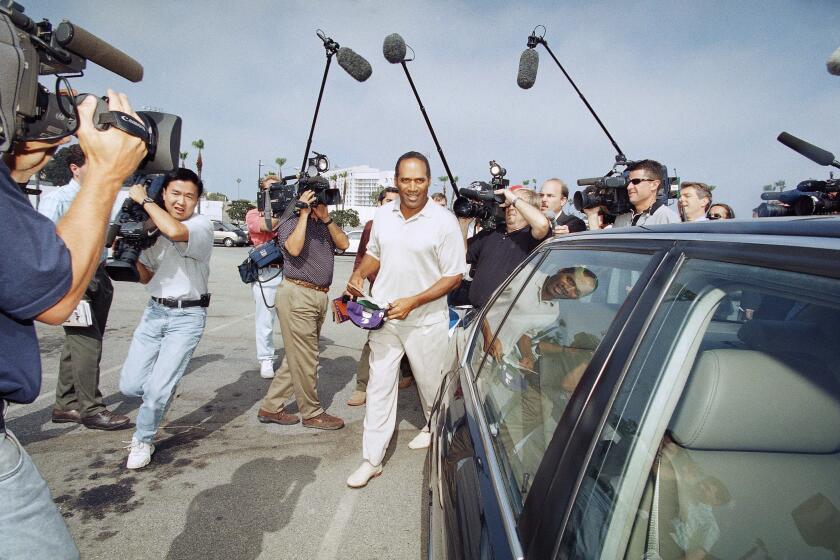Less parking for a better L.A.?
There is no doubt that Los Angeles would be a more pleasant place to live if more people would leave their cars at home. So would the rest of you please get off the freeway?
The notion that public transit or ride-sharing or bicycles are for “other people” is so commonly held that it has bedeviled the best efforts of urban planners to reduce sprawl and promote car-free communities. For years, Los Angeles has been experimenting with zoning and construction rules that encourage high density near public transit stations — so-called transit-oriented development — and creating more housing near employment centers to shorten commutes. The success of this strategy, once known as “smart growth” and now as “elegant density,” is mixed. So it’s with a sense of jittery optimism that we regard the L.A. City Council’s latest brainstorm: an ordinance that would ease requirements, within certain districts, on the number of parking spaces that developers of apartments, restaurants and stores must include.
The theory is compelling. Relaxing the rules would allow developers to build in places where it’s currently difficult because of a lack of space for parking. That could have the effect of revitalizing economic dead zones. The parking districts, which would be designated by the City Council, might encourage foot traffic and transit use.
Arguing against this are neighborhood groups that fear a shortage of commercial parking spaces will prompt people to park on residential streets nearby. Moreover, there’s little evidence that transit-oriented development projects have encouraged people to use public transit. A 2007 Times analysis of four major residential projects built near rail stations found that only a tiny fraction of residents actually rode the rails — because, as residents told The Times, they still found driving more convenient than taking public transit. Similarly, a reduction in parking spaces might just result in more frustrated motorists, not more rail passengers.
Proponents, however, have a powerful argument on their side: Similar parking schemes have worked. When parking rules were eased for developers who converted office buildings downtown into residential projects, it started a housing renaissance that helped turn a fading commercial center into a booming urban community. Moreover, public transit in Los Angeles County is getting better and more convenient all the time, thanks to Measure R, the 2008 sales tax measure that is rapidly adding new lines to the system.
In the end, we support smart growth, including parking limitations, because we can’t see much choice. The era of endless sprawl and devotion to the automobile has reached its limit in Southern California. For a cleaner environment and a more livable city, we must try a new approach.
More to Read
A cure for the common opinion
Get thought-provoking perspectives with our weekly newsletter.
You may occasionally receive promotional content from the Los Angeles Times.






